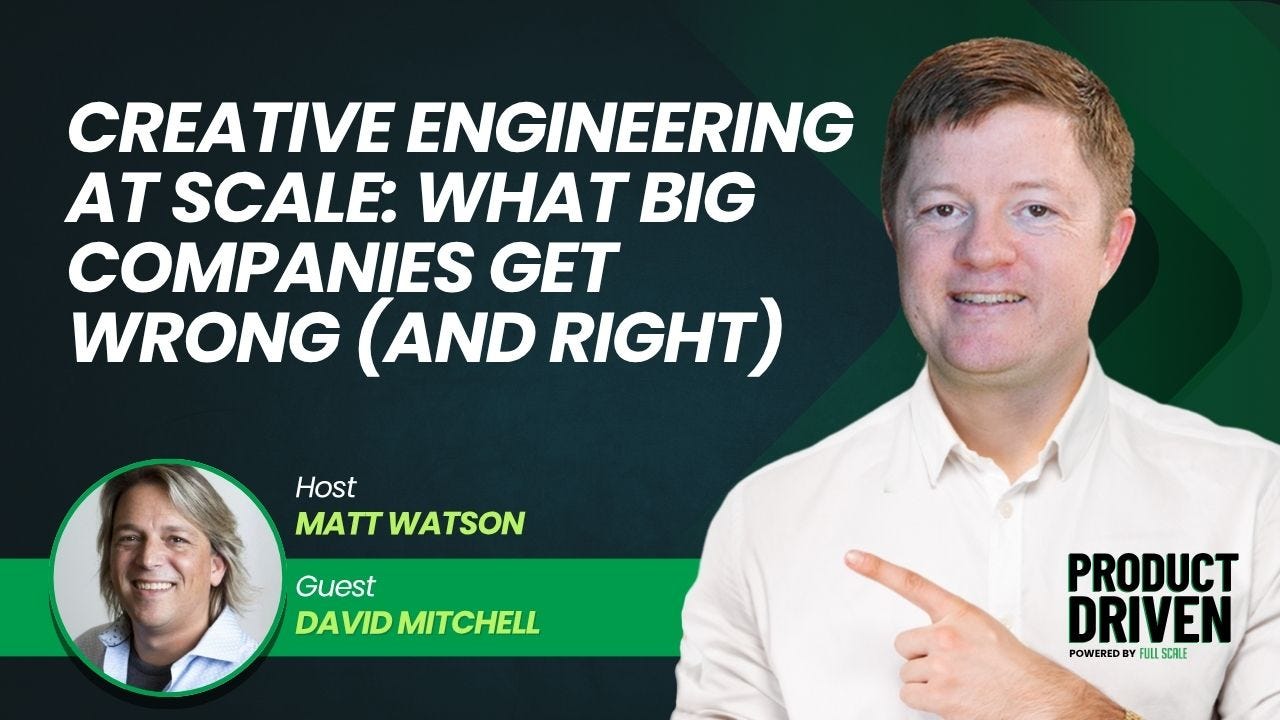What Big Companies Get Wrong (and Right) About Creative Engineering
You don’t scale creativity with headcount.
You scale meetings.
You scale process.
You scale compliance.
Most big companies do this and call it “maturity.” But let’s be honest—what they’re really doing is building a machine that turns creative engineers into ticket takers.
I sat down with David Mitchell, CTO of the Americas at VML (yes, the 30,000-person global creative agency), to talk about how they’ve scaled creative engineering—not just engineering—across thousands of developers working on massive projects for brands like Wendy’s and United Airlines.
And yeah, they’re doing a few things most big orgs just flat out get wrong.
What Big Companies Get Wrong
❌ They confuse structure with progress.
You add product managers, project managers, scrum masters, release managers, QA managers…
And now your best engineers can’t even ship a button without six approvals and a Jira ticket that’s older than your intern.
The more layers you add, the more disconnected teams become from the actual product. What started as “alignment” becomes red tape.
❌ They remove all creative responsibility from engineers.
Engineers become implementers.
Not builders. Not thinkers. Just order takers with a keyboard.
They’re handed specs and told to execute. No room for opinions. No room for ideas. No context on why they’re doing it. That’s not engineering. It’s typing.
❌ They focus on outputs instead of outcomes.
Your dashboards are full of velocity, story points, sprint burndown charts... but no one knows if what got shipped even mattered.
Activity ≠ Impact.
If you don’t tie engineering work back to real results, you’re just keeping people busy. Not productive.
What Great Companies Get Right
✅ They build small teams with ownership.
VML doesn’t throw headcount at problems—they build 5–7 person teams with full ownership.
That team ships the code.
Owns the quality.
Talks to stakeholders.
Knows the business problem they’re solving.
Ownership isn’t a slogan. It’s built into the structure.
✅ They teach engineers to speak in product language.
Every couple months, team leads write short updates—not to check a box, but to sharpen their voice.
Can you explain the why behind the code?
Can you describe real progress in plain English?
If not, you’re not just failing at communication—you’re failing at leadership.
✅ They use Journey-Driven Development—not process worship.
VML doesn’t obsess over funnel metrics or force “API-first” down your throat.
They start with actual human behavior—the journey your user is on—and work backward from there.
Design. Sketch. Ship. Get feedback. Repeat.
Process supports product—not the other way around.
🚩 How to Know You’re Getting It Wrong
Your best engineers don’t talk in meetings anymore
You’re spending more time estimating tickets than building
Teams don’t know if what they shipped is actually being used
People are busy, but no one knows what actually got better last sprint
If any of that feels familiar, it’s not just “growing pains.”
It’s a signal that creativity is dying inside your engineering org.
What to Do About It
Don’t blow everything up.
Start small:
Build smaller, autonomous pods with cross-functional ownership
Let engineers talk directly to stakeholders—skip the game of telephone
Prioritize value shipped over stories completed
Make space for experimentation (VML even funds sci-fi-style prototypes just to stretch the team’s imagination)
And above all—stop optimizing for velocity.
Start optimizing for insight.
Creative engineering doesn’t die because people stop caring.
It dies because the system stops rewarding them for thinking.
Let your teams think again.

